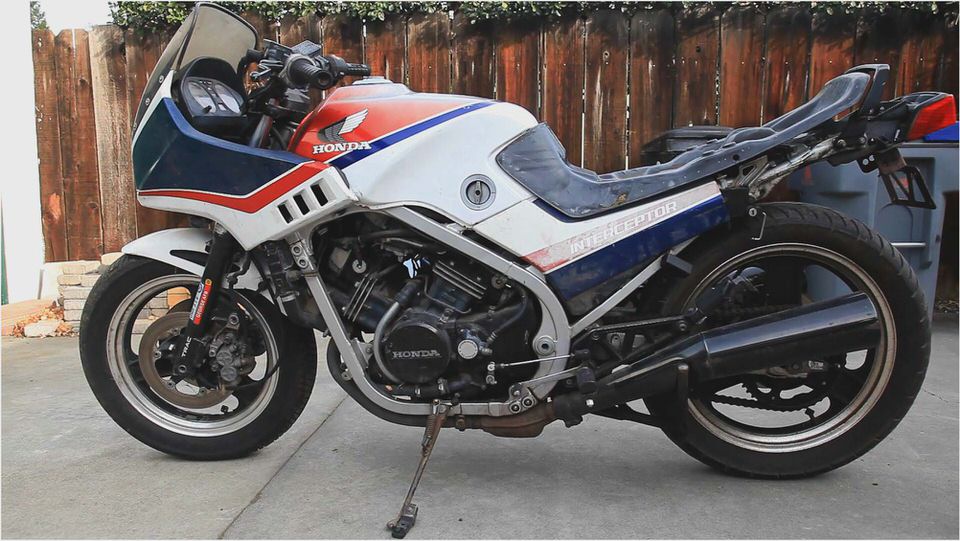
1986 Honda VF500 F2
Honda’s early V4 middleweight is one of those Japanese classics which is adored by the few and ignored by almost everyone else.
Honda’s V4s of the 1980s were blighted by a reputation for top end trouble. The first VF750s were considered fast but fragile, and that verdict tainted the smaller V4s which followed. However, the VF400F and VF500F2 were far more robust than the 750S and 750F – perfectly demonstrated by the fact that Colin Mackenzie’s 1986 500F2 is still going strong, 25 years and 25,000 miles after he first purchased it.
Colin’s VF was a winner at last year’s Scottish Classic Motorcycle Show ; it’s in immaculate, original condition, much the same as when it was first registered. Plus, says Colin, ‘it’s been totally reliable’ in all that time.
Colin Mackenzie’s 1986 Honda 500F2
Both the 400 and 500 provided peppy performance in petite packages. The 400 came first and was followed by the 500 (known as the Interceptor in the USA) in 1984. The 498cc DOHC liquid-cooled 90-degree V4 used a developed version of the 400 blueprint, bored and stroked and upgraded to give better durability and longer intervals between services.
That was important because you needed to take apart most of the motorcycle to adjust the tappets, so it wasn’t a job you wanted to do more often than every 8000 miles. A batch of faulty crankshafts caused some initial – painful – failures, but the 500’s smooth and tractable power delivery won over those riders who tried it for themselves.
1986 Honda 500F2
Running at 11:1 compression, the engine output around 65bhp (claims of nearly 70 horsepower were a little on the optimistic side) at 11,500rpm, and max torque of 32ft/lb was available at 10,500rpm. This was good enough to propel the 185kg (just over 200kg when fuelled) VF to 120mph. It accelerated to 60mph from a standstill in 3.9 seconds and covered a quarter-mile in 12.66 seconds.
In real life use, the VF400 and VF500 were a match for Yamaha’s class-leading, two-stroke powervalve LCs, not least because the Honda’s free-flowing power delivery and responsive handling gave the VF rider greater control and the confidence to use all the available impetus.
1984 Honda 500F
The VF500 featured a square-section steel tube frame with cast aluminium box-section swinging arm. The front forks were air assisted and braced, with Honda’s Torque Reaction Anti-dive Control adding complexity. TRAC did work reasonably well at reducing fork compression under heavy braking and was capable of cushioning bumpy road surfaces, unlike some anti-dive systems of the time, but it can be problematic to keep in working order after many years in service.
The air-assisted Pro-Link monoshock allowed for basic adjustment (and ages rapidly, going soggy rather faster than owners expected), while the close-ratio six-speed gearbox assisted rapid getaways.
The VF500 dates from the days when 16-inch front wheels, temperature gauges, taper roller bearings and electronic tachos were things to be boasted about. It also featured an hydraulic clutch, four 32mm CV Keihin carbs, an automatic camchain adjuster, O-ring final drive chain, and triple 10-inch discs.
Honda aimed to minimise mass by using lightweight components, including the new Comstar wheels and duralumin handlebars, to offset the addition of the full fairing. The VF400 made do with a handlebar fairing and bellypan, as did the standard 500F, but the F2 came with a handsome, race-style fairing… one which proved to be horribly expensive to replace if it tangoed with the tarmac.
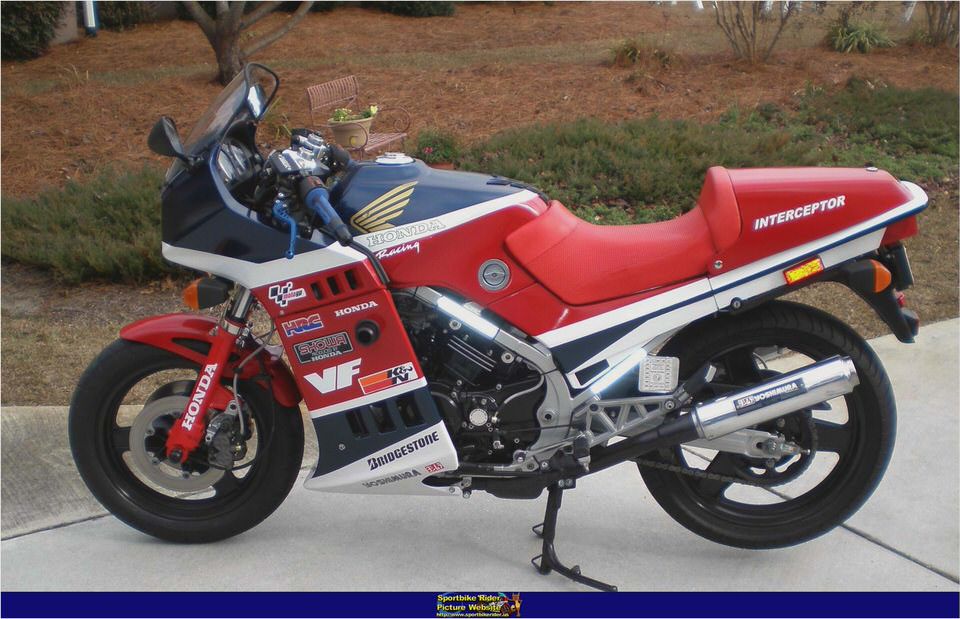
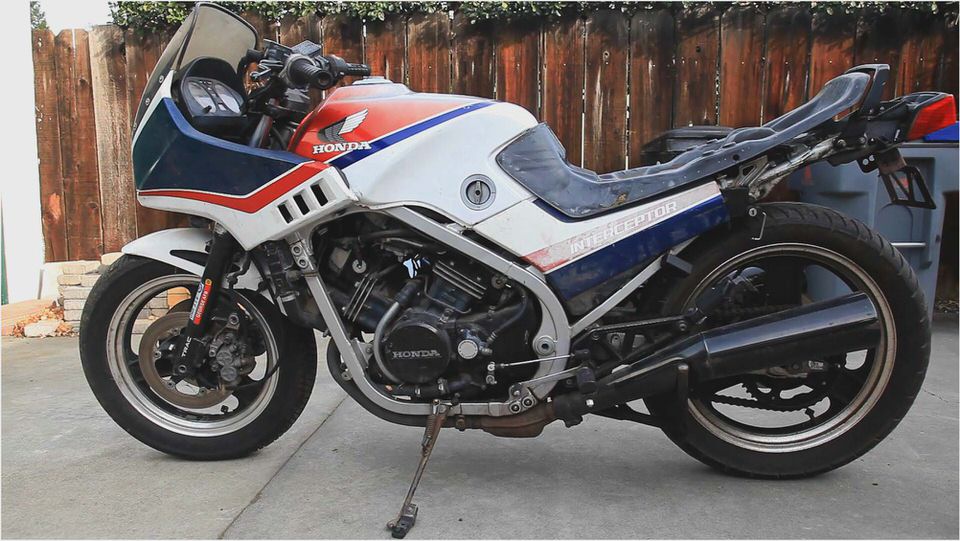
Honda 500s on eBay Right Now.
In keeping with most sports middleweights of the day, the VF500 was not a radical race-replica although some riders took a little while to adapt to its revvy engine. The power surged after 7000rpm with the redline at 12k, which seemed impossibly high for a four-stroke at the time. Yet the VF delivered its power with exhilarating ease and avoided the snappish nature of the RR generation that followed.
The VF500 combined a 31.5mm seat height with 5.5 inches of ground clearance. It proved to be comfortable to ride on long distances and with a pillion. At typical UK road speeds it would return 52mpg. It could be equipped with luggage to go touring or, ridden briskly, it was nippy and nimble enough to discombobulate heavier, less manoeuvrable 750 fours. On the downside, the VF500 was expensive.
It cost Ј2500 new, when the RC350LC cost just Ј1700. The VF was nicer to live with… but to ask 40% more for a congenial attitude was a little too ambitious of Honda at the time.
The VF’s motor was modified in mid-1985 to create the F2F, and that model may be one of the best all-round motorcycles of its decade. Certainly, when the VF500 was discontinued its successor was not, as is often supposed, the CBR600F. No – the bike which followed in the footsteps of the VF500 was perhaps the ultimate all-rounder and it too was a V4: the VFR750.
However, although it might have been a stepping stone to one of the finest roadbikes ever built, no one can claim that the VF500 was a roaring success in its own right. As Julian Ryder explained; ‘taken in isolation, the VF500 was a superb motorcycle which had a cult following long after Honda ceased making it, but price, complexity and the fallout from its bigger sibling’s troubles conspired to make it a commercial failure.’
And that’s why you don’t see too many VF500s on the road today. You will find ratty examples selling for under Ј500; three times that amount will get you one in superb condition. A well maintained, roadworthy VF500 F2 in standard spec, apart from a tricksy paintjob, was sold at auction for just under a grand in April 2011.
Words: Rowena Hoseason
Illustrations: Archive and Colin Mackenzie

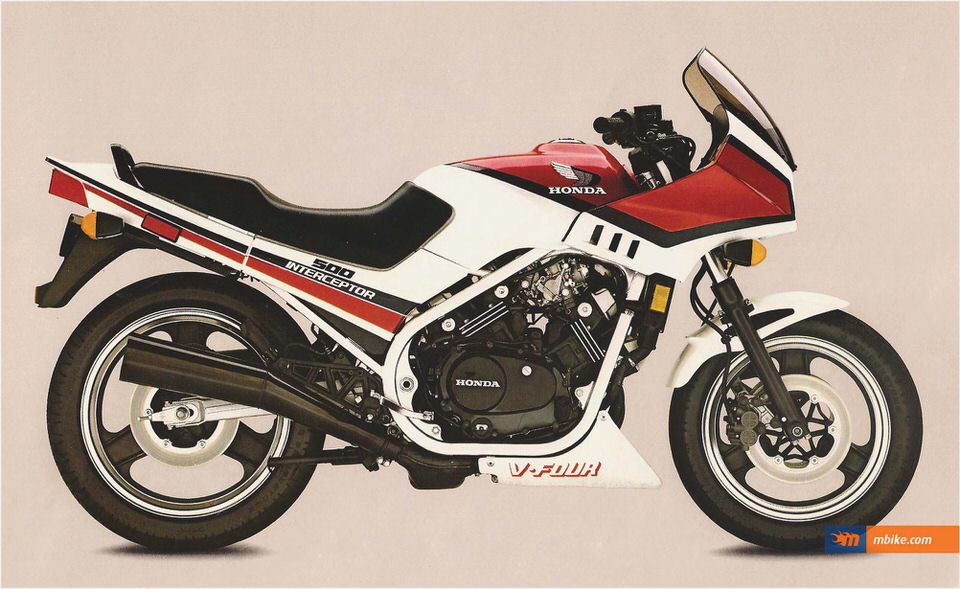
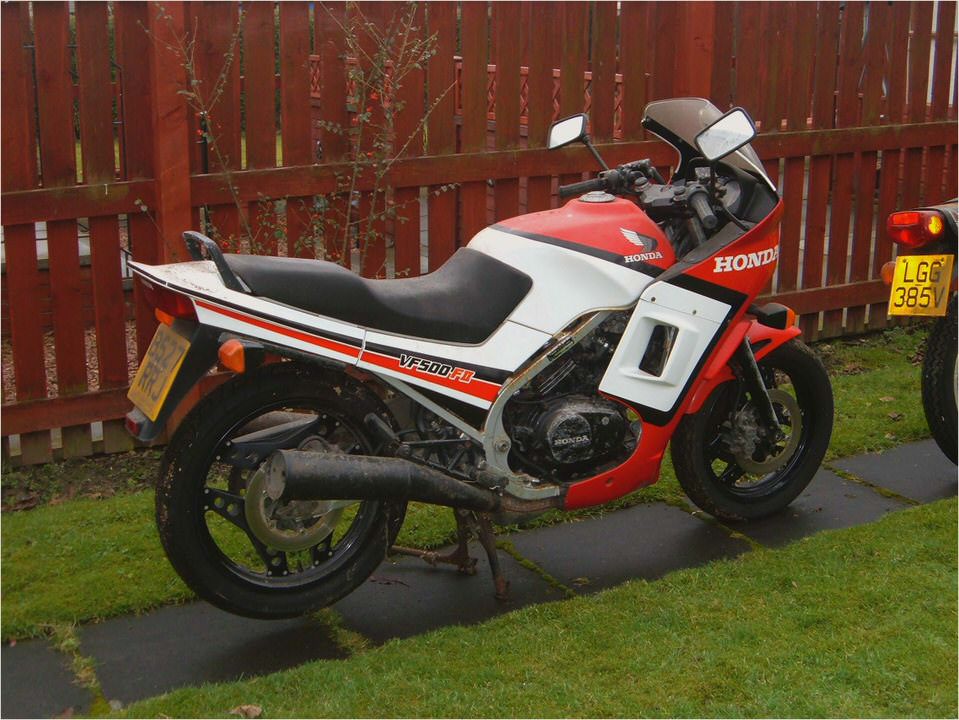
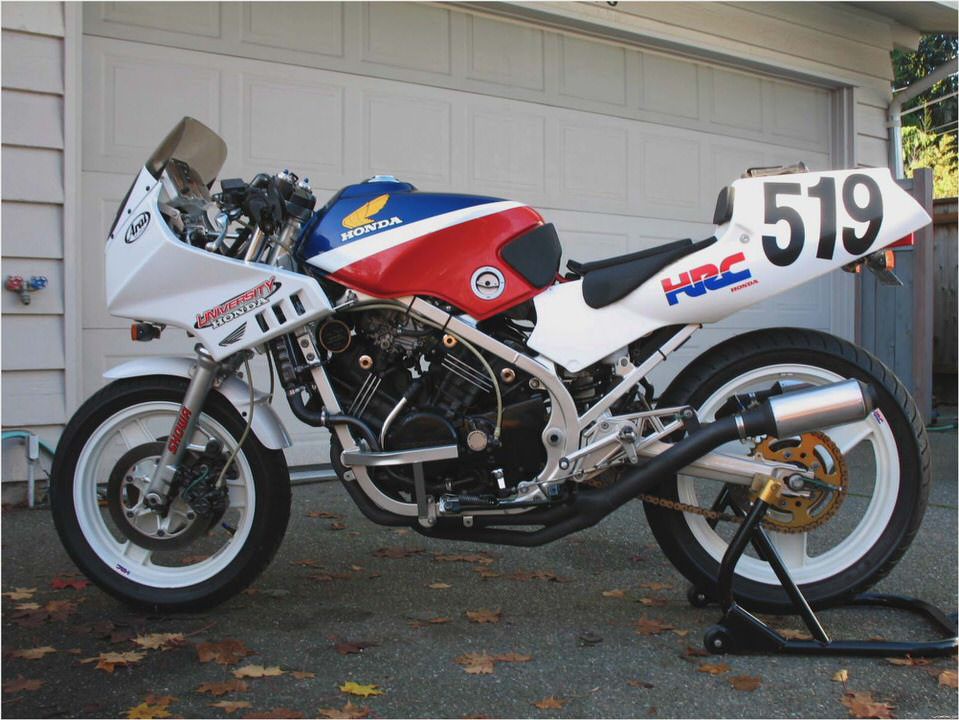
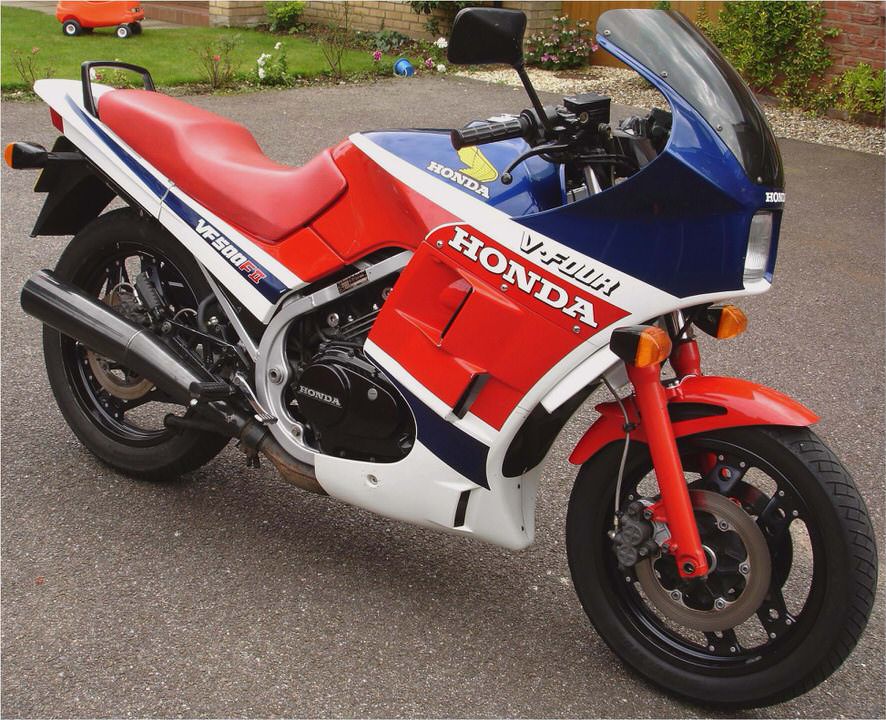
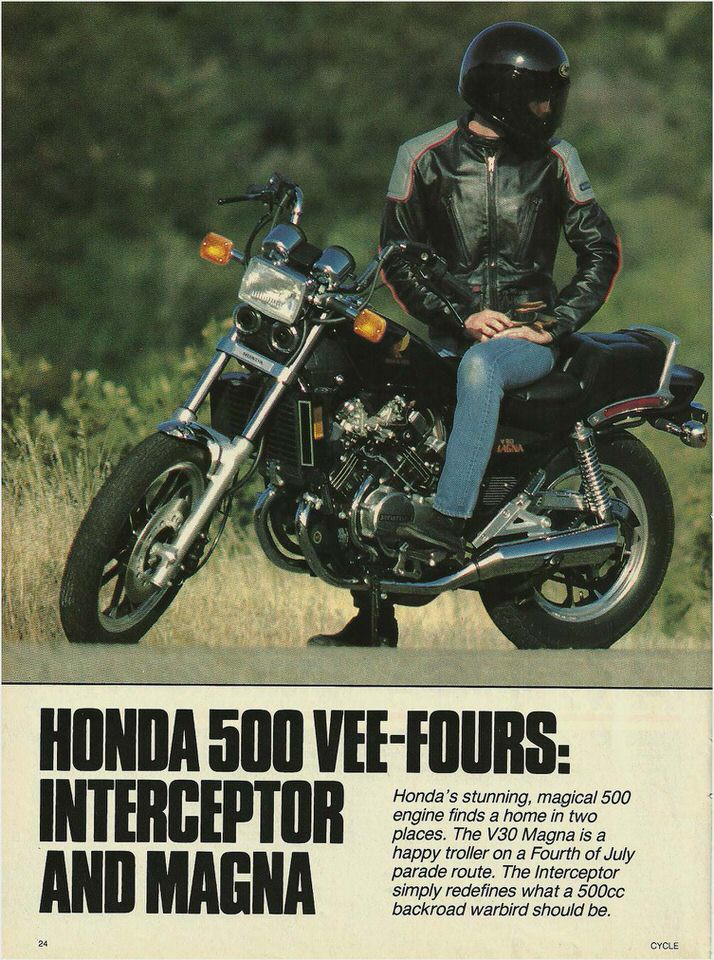
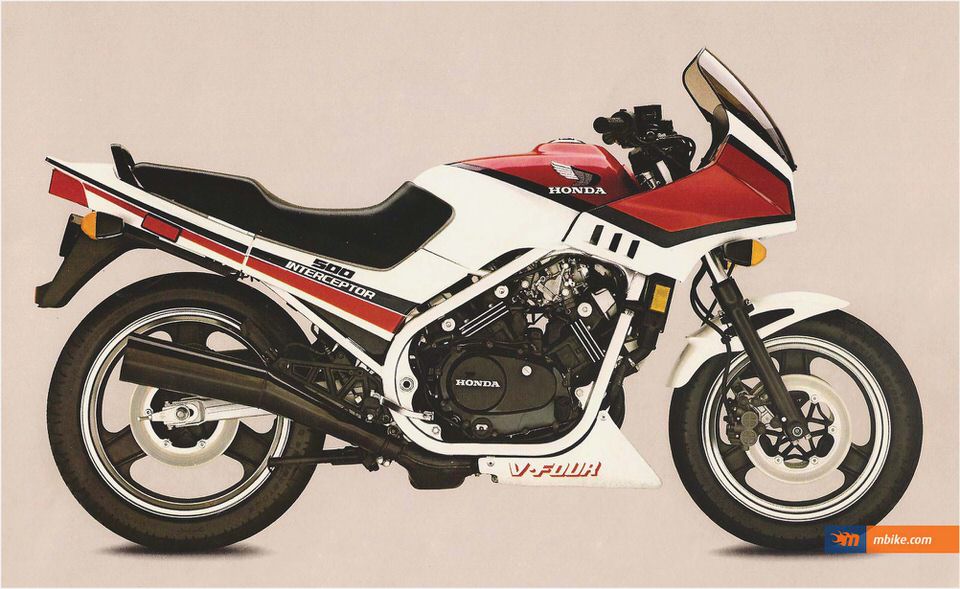
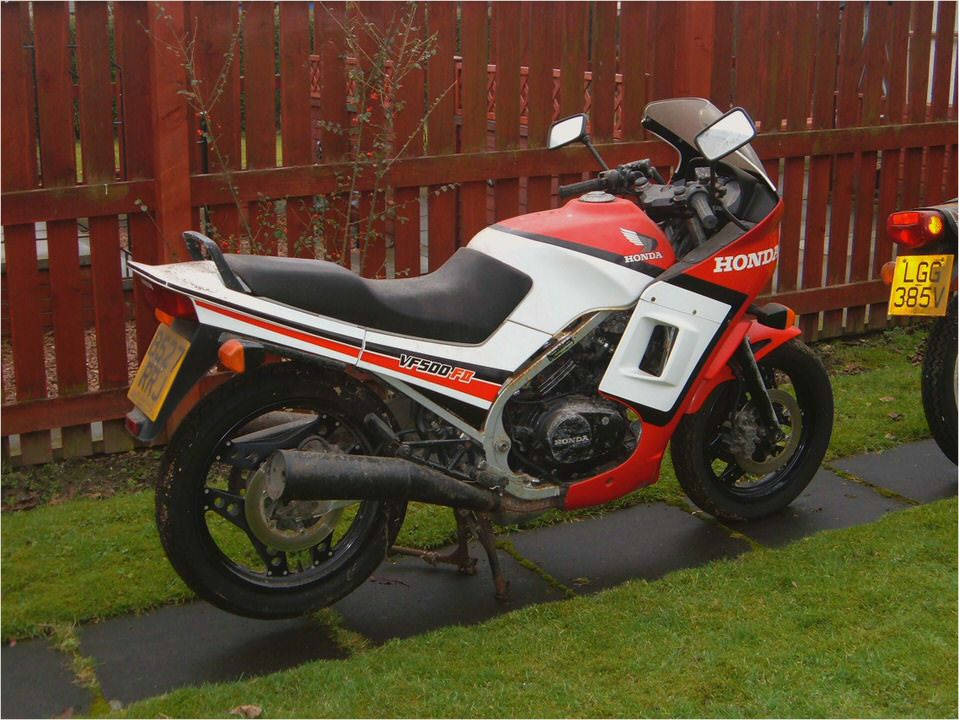
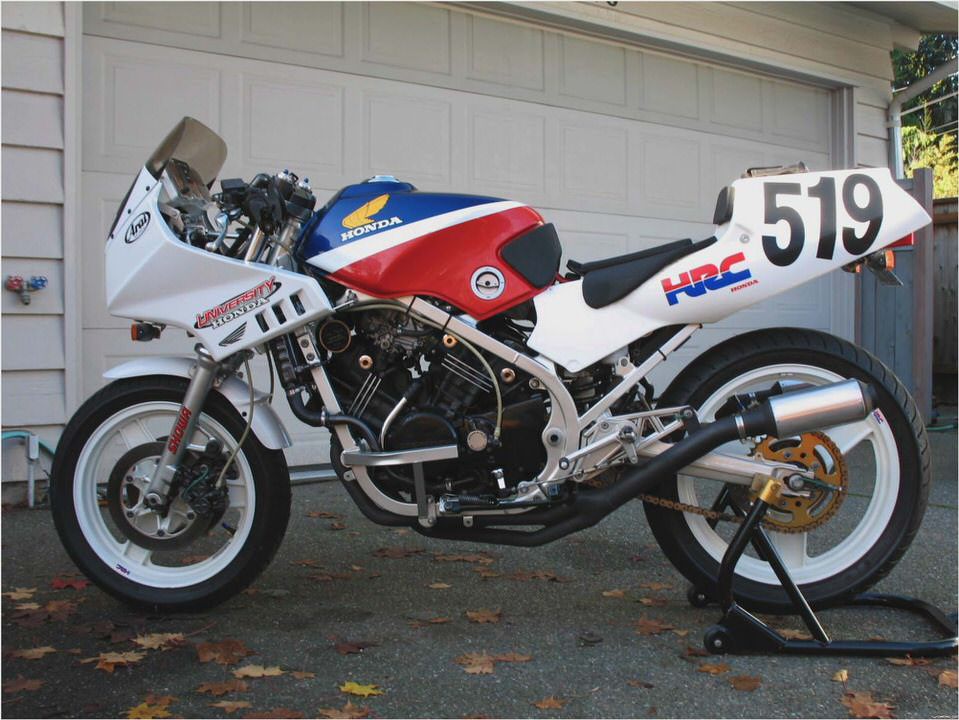
- Honda V4 Concept 2009
- Honda Helix CN250 Scooters Mopeds
- Honda XL 700V Transalp Adventure Touring Bike Reviews Australia www.honda.com.au
- Bridgestone SA/SAGMJ Motor Sportsman of the Year Nominations Bridgestone…
- Honda NSR 125 Review

